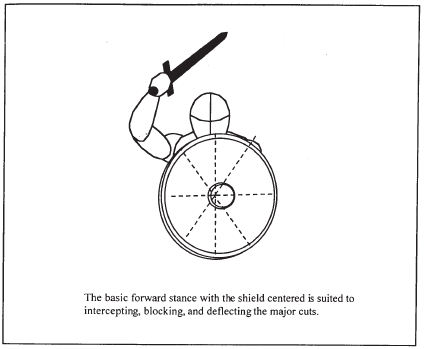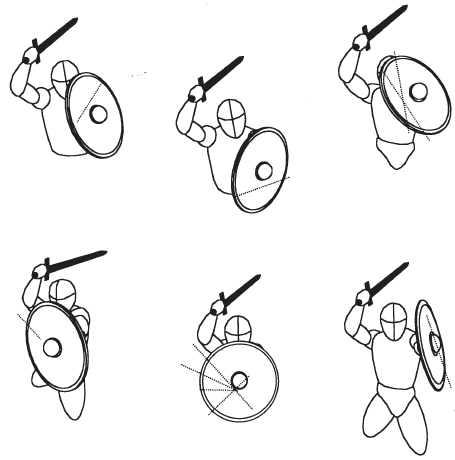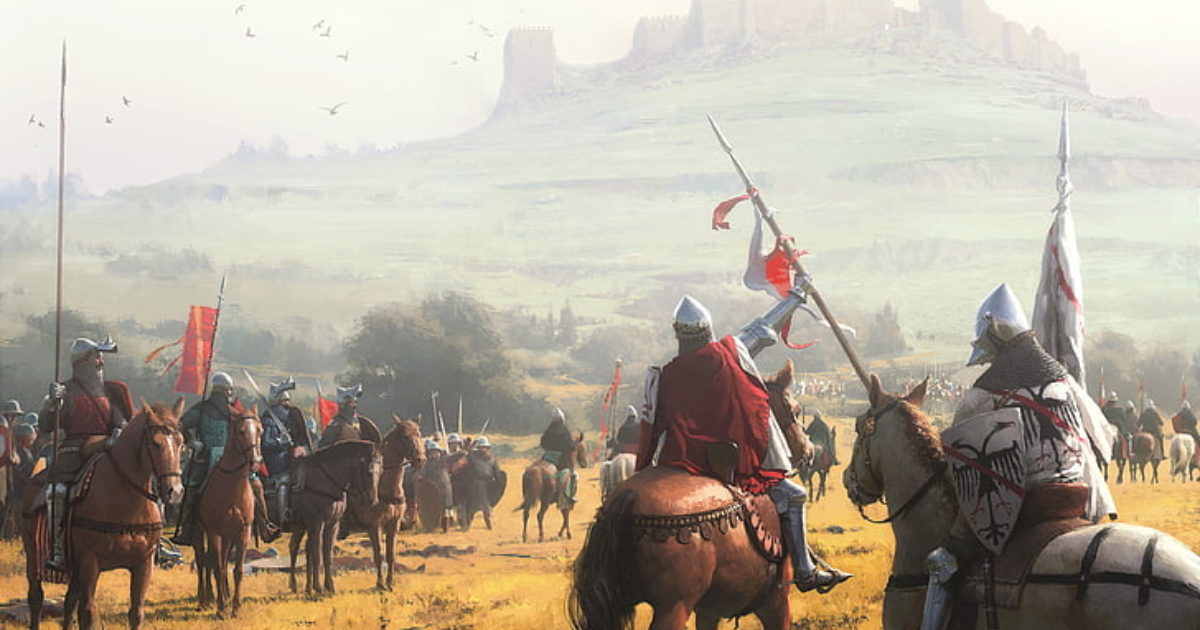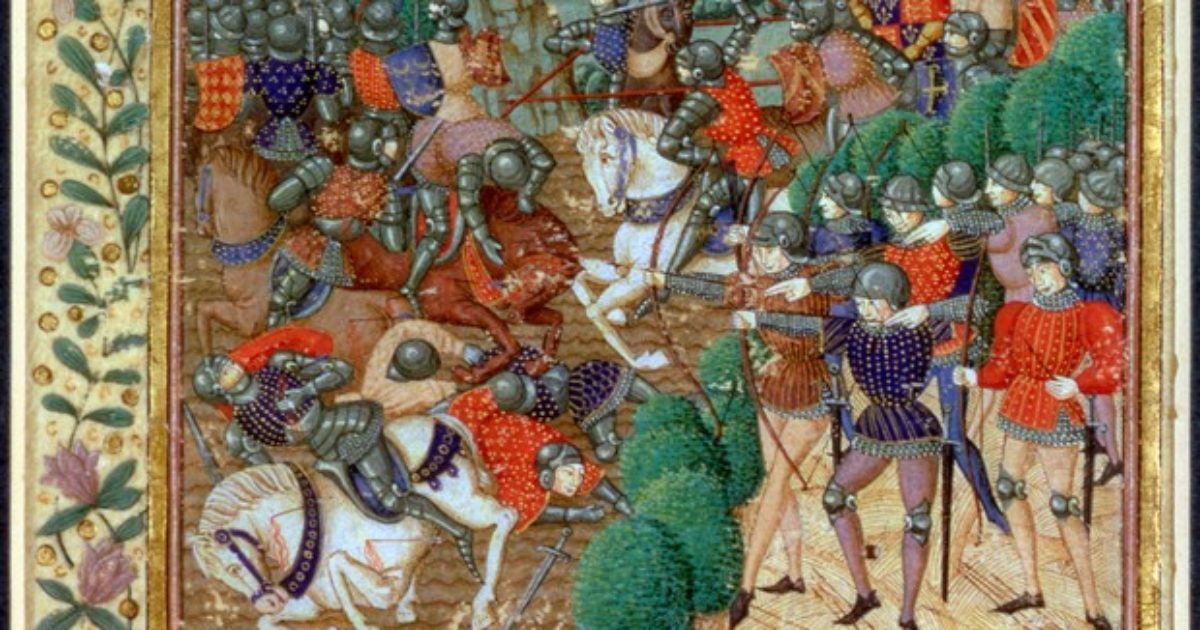
Sword and Shield Beginner Course (Iron Thorn Manual 1st Edition)
Sword and Shield (also known as Arming Sword) was the typical fighting style since the sword was first invented for warfare and remained so until shields began to be phased out and the Side Sword with Cut-and-Thrust fencing was developed in place of the Arming Sword (Bronze Age-Late 15th Century). The style of fighting traditionally consists of the use of a one-handed sword with a protective shield, using the shield for defense and the sword for attack.
The Swords
The most common sword for Sword and Shield is the Arming Sword. The Arming Sword is a one-handed, long bladed sword used by the Europeans during the Middle Ages. In movies and video games the Arming Sword is either known as a broadsword or longsword but neither is correct for it. Other swords for Sword and Shield can be any one handed sword used with a shield of any culture or time period (see figures).
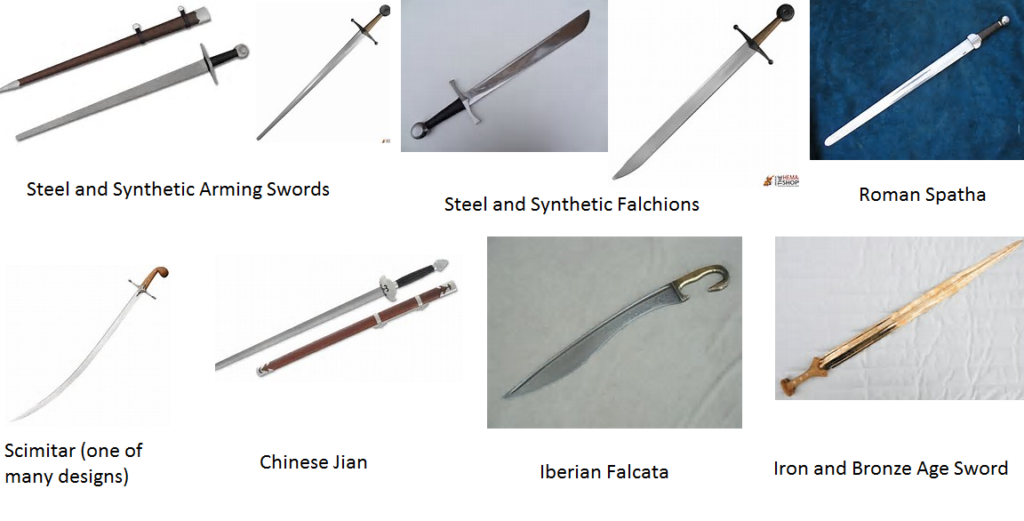
The Shields
Shields are an essential part of Sword and Shield. The Shield is your most protective weapon, it literally shields you from enemy blows. The most commonly used shields in Sword and Shield are the Round and Heater Shields as they are decently sized, more commonly seen shields in movies and video games, and lighter. The Round shield is circular, with either a metal or leather trimming and what’s called an umbo in the center (the bump in the middle). Round shields were more commonly used by Anglo-Saxons and Vikings. The Round shield would later become the buckler, but bucklers are not used in Sword and Shield. The Heater was the Medieval shield from the 12th century through the late 15th century as shields were phased out as armor became thicker and stronger, and the invention of guns. Prior to the Heater was the Kite shield (often mistaken for the heater). Kite shields were large shields favored mostly by the Normans and spread throughout Europe and the Middle East over time prior to the Heater. Earlier Kite designs had a rounder top, while later designs had a flat top to make it easier for the soldier to see over the shield. Prior to the Kite, the Romans used the Scutum, also known as a Tower Shield. The Scutum was a large square shield that offered substantial protection for the Roman Legions. In Sword and Shield as a sport for Terrasylvae, a fencer may use a Scutum, but it must be reduced in size (see figures).

Four Levels of Importance
- Safety-With a contact sport, one must maintain safety in order to keep people from severe injury or death.
- Honor-The game does not work without fencers acknowledging shots. And proclaiming if a shot was bad.
- Attitude-Without an attitude of fun, the game is no longer fun for you or those around you, maintain a good attitude, and if you find yourself getting frustrated, leave the fight and calm down.
- Skill-One should always seek to practice and hone their skills.
Protective Gear
As with all contact fencing sports, longsword has its own protective gear. As a longsword fencer you should find your protective gear for your own safety and wellbeing. Below is a list of required and recommended protective gear.
- Required
- Protective Mask (Including back of head protection)
- Padded or armored gloves
- Elbow Pads
- Knee Pads
- Forearm Protection
- Gorget
- Recommended
- Padded chest protection
- Shin Protection
The Stance
Unlike most other fencing styles, the standard stance for Sword and Shield is what is known as riposte. In riposte, the shield arm and leg lead, while the fighting arm and leg follow behind. The stance is very defensive allowing for the shield to be better at defending and opening op attacks with the sword. There are three basic guards to sword and shield, High, Middle, and Back. High guard is the most common and popular among Sword and Shield fighters. In High guard the shield is extended a bit from the body while the arm relatively relaxes at the elbow. The sword is raised above the head with the blade pointed behind or hanging behind, allowing for a downward attack (see figures 1 and 2). In Middle Guard the sword is held to the side with the blade pointed outwards. Certain slashes can be difficult from this position, but thrusting is easier from this guard (see figures 1 and 3). In Back Guard the sword is held out behind you with the blade towards the ground. This allows for strong attacks from this position (see figures 1 and 4).
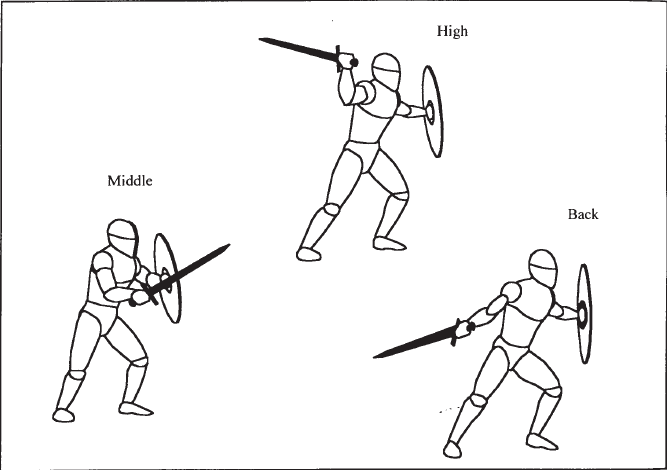


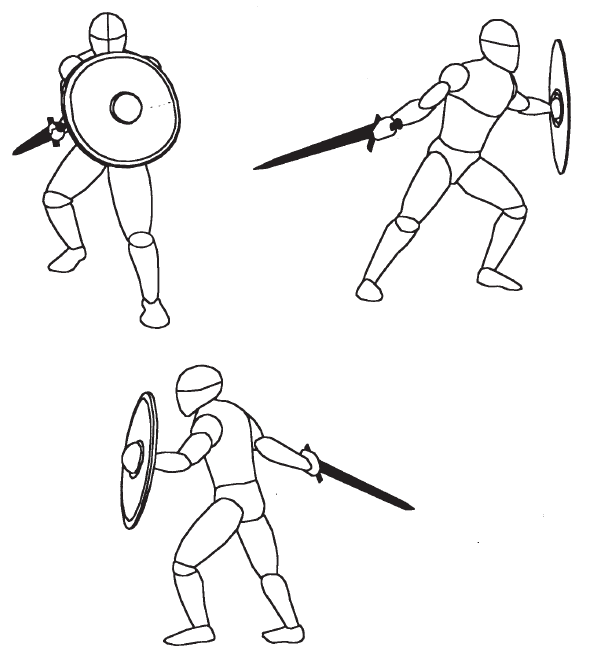
Holding the Sword and Shield
Gripping the one-handed sword is nothing too spectacular or special, the handle is simply gripped comfortably by the hand for ease of use. The crossguard may be fingered, but this is discouraged do to the finger being exposed and possible to be hit in a fight. The Shield can be held with a single handle with arm outstretched (similar to bucklers in rapier and cut-and-thrust), however most shields will have either a handle and a strap, or two straps (one that is gripped by the hand) allowing the shield to be braced over the forarm. There should be a relatively decent gap between the body and the shield to allow the shield to have enough roam to protect against attacks (see figures).

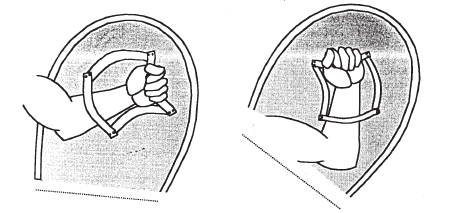
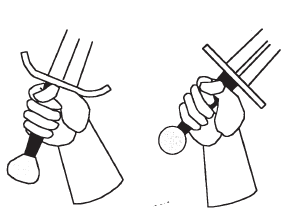
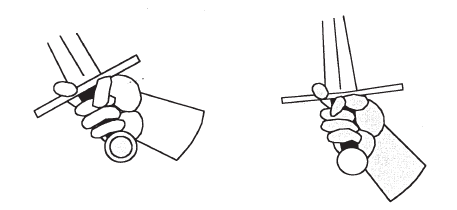
Parts of the Blade
The blade of a sword in sword and shield consists of the Shoulder, Center, and Tip. The Shoulder is the stronger part towards the hand and if one needs to parry with the sword, it is the preferred part. The Tip is the weaker part of the blade more towards the tip, and is best used for attacks and cuts (see figure).

Attacks
Attacks in Sword and Shield are heavier and stronger than other forms of fencing. The difficulty in Sword and Shield is making attacks happen by going around the shield. In order to accomplish this, attacks must be wider, and as a fighter you will need to move your shield to compensate for the attack which can leave you vulnerable to a counter. Also, in order to get a solid strike in, your upper body should move with the sword to get the extra force of the attack, finally make sure your blade follows through with the attack for a decent cut, or if you opponent blocks, you can successfully regain your blade for another attack (see figures).
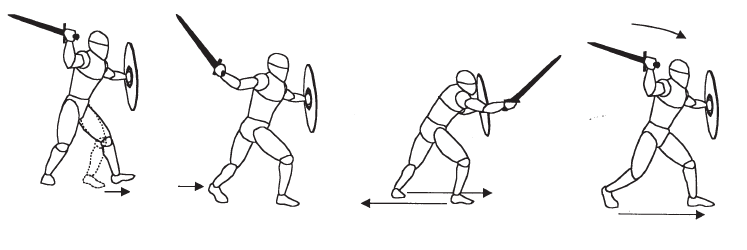
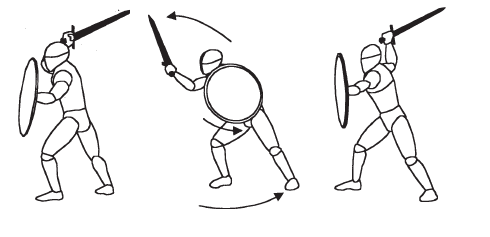


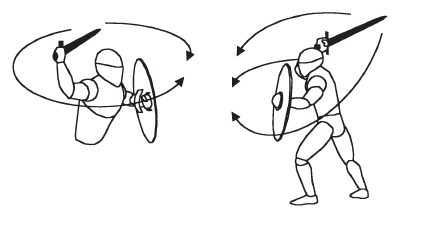


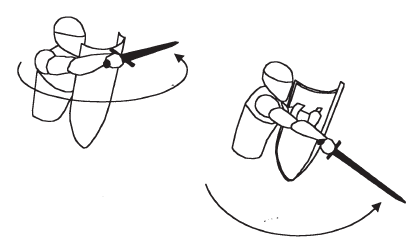
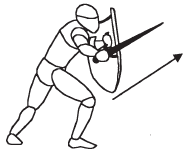
Blocks and Parries
While most fencing styles use the sword as both an attacking and parrying device, in Sword and Shield, your defense relies on the shield you hold. The Shield should be held with a decent gap from the body, where most of it should cover your upper body. This allows for substantial movement of the shield to protect where it needs to. A rule of thumb is always counter if you have blocked an attack with your shield. Parrying is uncommon in Sword and Shield and should not be relied on when defending as the only other option in a real battle would be to shield bash, which is only legal when fighting with Polymer swords and LARP shields. However, if a blade is parried, allow the enemy blade to slide along yours and off, allowing you to regain your momentum and attack (see figures).
